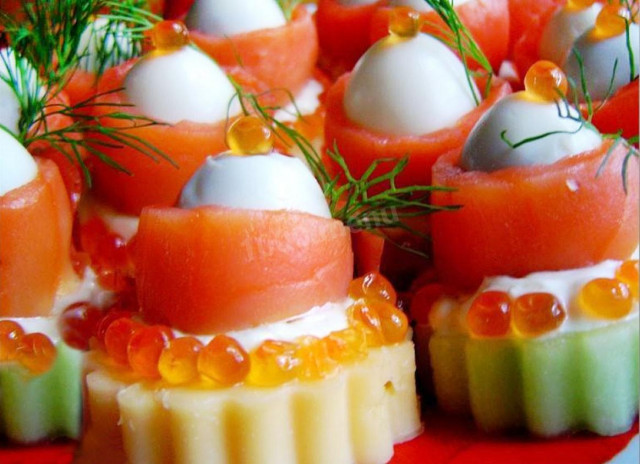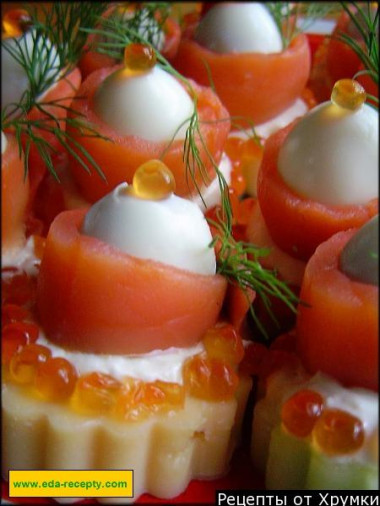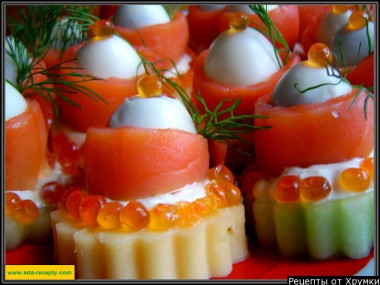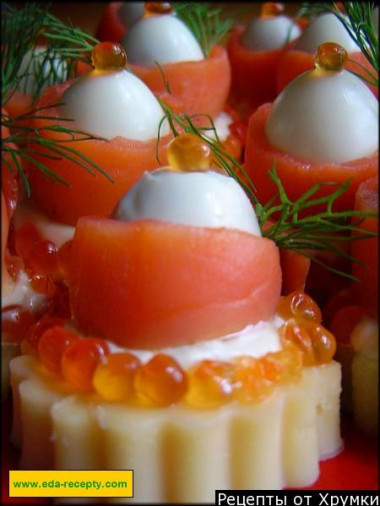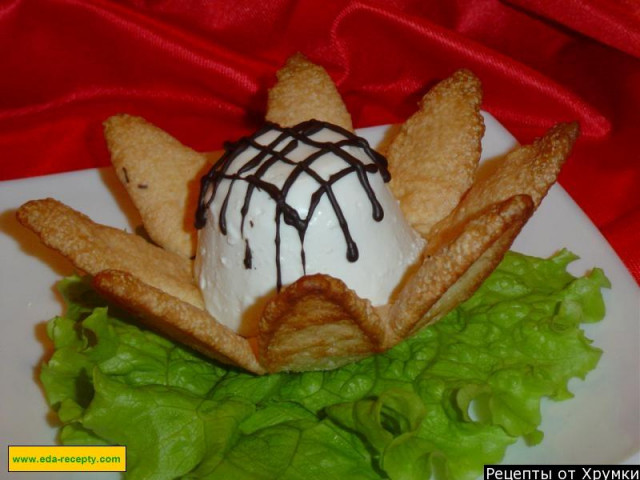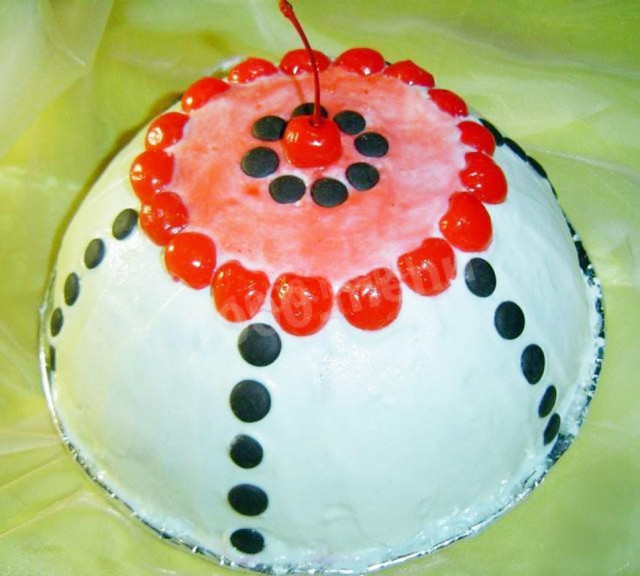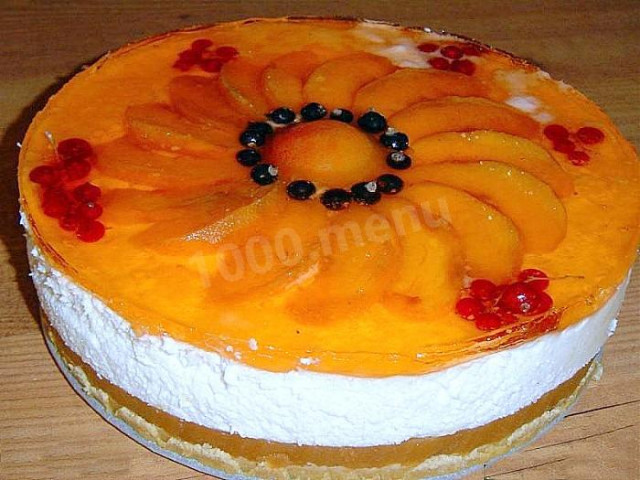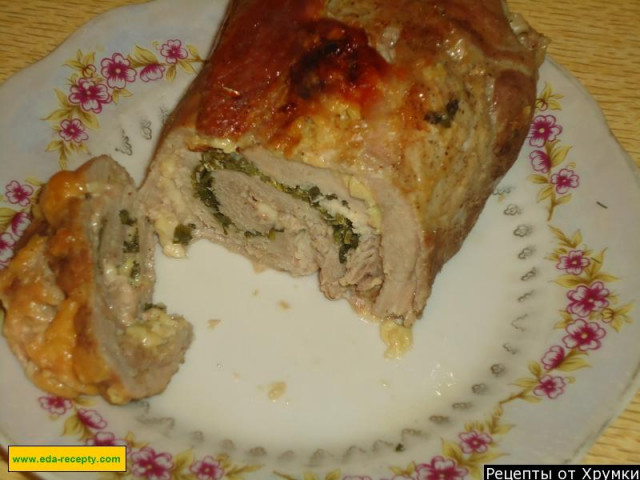Composition / ingredients
Step-by-step cooking
Step 1:
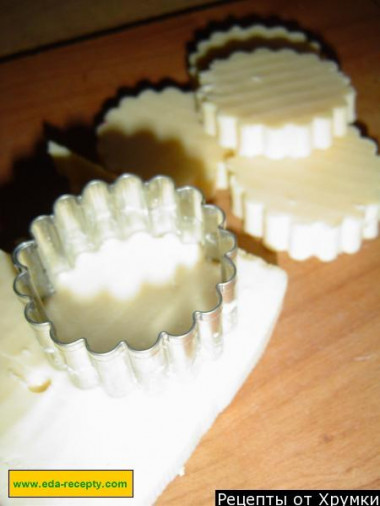
Cook quail eggs to a hard-boiled state, then cool them in cold water and clean. We cut the cheese into plates with a thickness of 1 centimeter, from the plates with a curly mold of a suitable diameter we squeeze out "flowers".
Step 2:
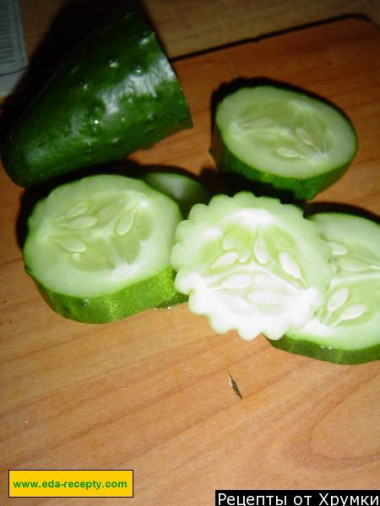
Cucumbers are washed and cut into circles of the same thickness as cheese. We cut out flowers from them with the help of the same mold. Thus, we get two types of flowers - cheese and cucumber.
Step 3:
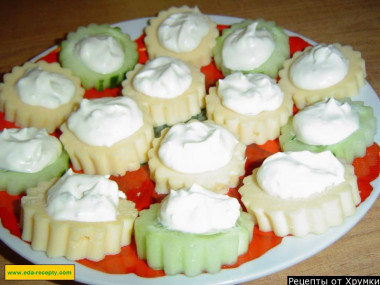
We spread the flowers of cheese and cucumbers on a flat large dish, put cream cheese on top.
Step 4:
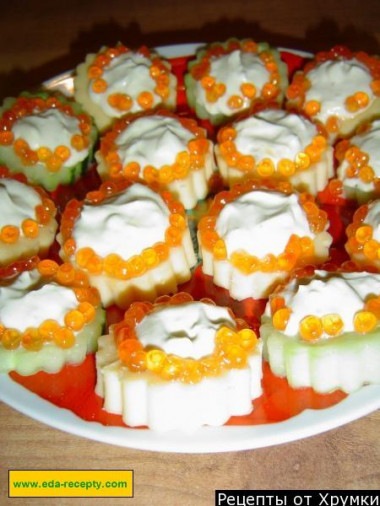
We spread red caviar around the cheese.
Step 5:
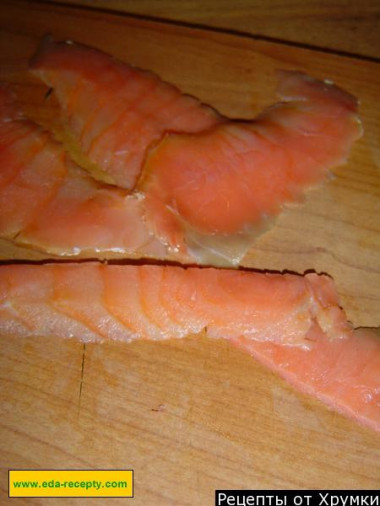
Salmon cut into long and thin plates.
Step 6:
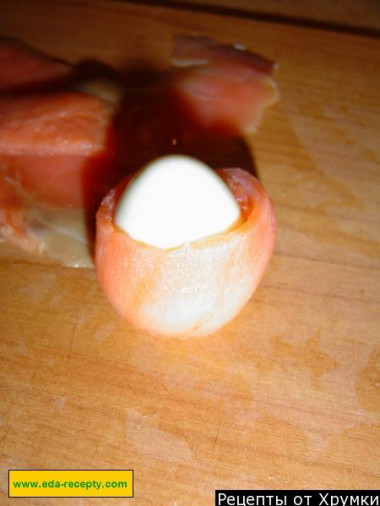
Wrap each egg with a salmon plate.
Step 7:
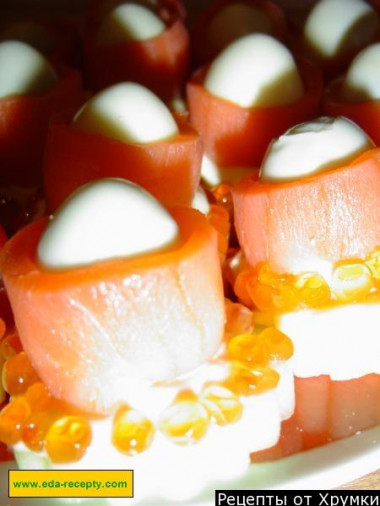
Put them in the center of the "flowers".
Step 8:
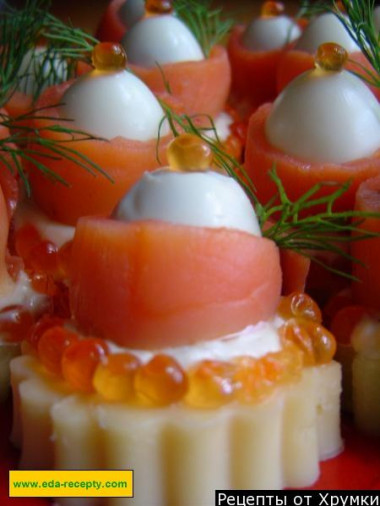
Each canape is decorated with fresh dill greens and eggs. Here is such an edible and appetizing design we get. This snack of quail eggs will decorate the festive table and make it as diverse as possible.
This snack is from the category of festive, but, at the same time, simple and fast. Suitable for family celebrations, corporate parties, receptions or romantic tete-a-tete evenings. Having all the necessary ingredients at hand, you will quickly cope with the task of making a beautiful snack for a festive or other suitable occasion. I was preparing one for the New Year - she didn't "live up" to the chimes. I had to do more in a hurry, fortunately it didn't take much time. Next time I'll do more right away so that all the guests are satisfied and leave me well-fed. My friends vied with each other to ask me how to cook such a sea snack from salmon? Naturally, I shared the recipe with them with great pleasure (we do so often in relation to each other) - and now I'm waiting for them to call me for a tasting. Instead of salmon, you can take another red fish, but only too fat, for example, salmon or trout. I wish you that everything turned out one hundred percent and turned out delicious! Bon appetit!
Calorie content of the products possible in the composition of the dish
- Fresh cucumbers - 15 kcal/100g
- Dutch cheese - 352 kcal/100g
- Swiss cheese - 335 kcal/100g
- Russian cheese - 366 kcal/100g
- Kostroma cheese - 345 kcal/100g
- Yaroslavsky cheese - 361 kcal/100g
- Altai cheese 50% fat content - 356 kcal/100g
- Soviet cheese - 400 kcal/100g
- Cheese "steppe" - 362 kcal/100g
- Uglich cheese - 347 kcal/100g
- Poshekhonsky cheese - 350 kcal/100g
- Lambert cheese - 377 kcal/100g
- Appnzeller cheese with 50% fat content - 400 kcal/100g
- Chester cheese with 50% fat content - 363 kcal/100g
- Edamer cheese with 40% fat content - 340 kcal/100g
- Cheese with mushrooms of 50% fat content - 395 kcal/100g
- Emmental cheese with 45% fat content - 420 kcal/100g
- Gouda cheese with 45% fat content - 356 kcal/100g
- Aiadeus cheese - 364 kcal/100g
- Dom blanc cheese (semi-hard) - 360 kcal/100g
- Lo spalmino cheese - 61 kcal/100g
- Cheese "etorki" (sheep, hard) - 401 kcal/100g
- White cheese - 100 kcal/100g
- Fat yellow cheese - 260 kcal/100g
- Altai cheese - 355 kcal/100g
- Kaunas cheese - 355 kcal/100g
- Latvian cheese - 316 kcal/100g
- Limburger cheese - 327 kcal/100g
- Lithuanian cheese - 250 kcal/100g
- Lake cheese - 350 kcal/100g
- Gruyere cheese - 396 kcal/100g
- Steamed salmon - 197 kcal/100g
- Boiled salmon - 189 kcal/100g
- Fresh salmon - 140 kcal/100g
- Pink salmon caviar grainy - 230 kcal/100g
- Salmon caviar grainy - 245 kcal/100g
- Quail egg - 168 kcal/100g
- Cream cheese with 50% fat content - 349 kcal/100g
- Fresh frozen soup greens in a package - 41 kcal/100g
- Greenery - 41 kcal/100g

